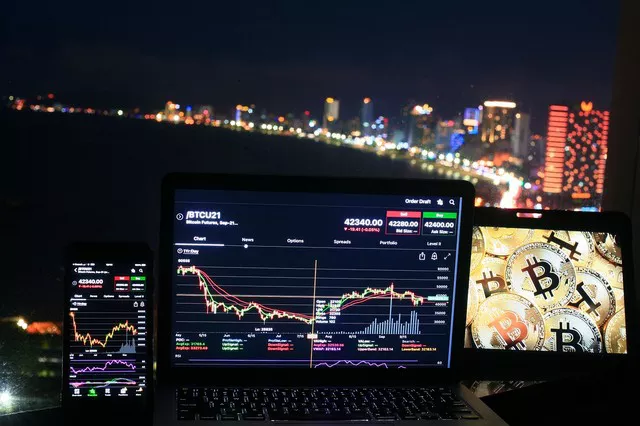In recent years, water futures trading has emerged as a critical tool for investors seeking to manage risks associated with water scarcity and capitalize on opportunities in the global water market. In this article, we provide an in-depth overview of water futures trading, including an explanation of water futures, information on trading platforms, market indices, the trading process, risk management strategies, regulatory compliance, market analysis, and educational resources for aspiring traders.
Explanation of Water Futures: Understanding the Basics
Water futures are derivative financial contracts that allow investors to speculate on the future price of water. These contracts enable market participants to hedge against the risk of water scarcity or price volatility by locking in future prices for water delivery. Similar to other commodity futures, water futures contracts represent an agreement to buy or sell a specified quantity of water at a predetermined price on a future date. Water futures serve as valuable risk management tools for businesses, agricultural producers, municipalities, and investors looking to manage exposure to water-related risks.
Trading Platforms: Where to Trade Water Futures
Several trading platforms offer access to water futures contracts, allowing investors to participate in the water market. One prominent platform is the Chicago Mercantile Exchange (CME Group), which launched the world’s first water futures contract in December 2020. The CME Group’s water futures contract is based on the Nasdaq Veles California Water Index (NQH2O), providing investors with exposure to water prices in California, one of the most water-stressed regions in the United States. Additionally, other futures exchanges and trading platforms may offer water futures contracts, providing investors with alternative avenues for trading water derivatives.
Market Indices: Understanding Relevant Benchmarks
The Nasdaq Veles California Water Index (NQH2O) is a key market index that serves as the basis for water futures contracts traded on the CME Group. This index tracks the volume-weighted average price of water in California, reflecting the cost of water transactions in the state’s primary water markets. By referencing the NQH2O index, water futures traders can gain exposure to the California water market and hedge against price fluctuations in this critical region. Other indices and benchmarks may also exist, providing investors with additional insights into water market trends and price dynamics.
See Also: What is the margin on E-mini futures?
How to Trade: A Step-by-Step Guide
To begin trading water futures, investors need to follow a series of steps to open and fund a trading account, verify their identity, and execute trades. Firstly, investors should select a reputable futures brokerage firm that offers access to water futures contracts, ensuring that the platform is regulated and provides robust trading infrastructure. Next, investors will need to complete the account opening process, which typically involves providing personal information, verifying identity documents, and funding the trading account. Once the account is set up, investors can access the trading platform, conduct market analysis, place orders, and monitor their positions in real-time.
Risk Management: Mitigating Risks
Risk management is a critical aspect of successful water futures trading, given the inherent volatility and uncertainty in commodity markets. Investors can employ various risk management strategies to protect their capital and minimize losses, including hedging, diversification, and position sizing. Hedging involves using futures contracts to offset risks associated with water price fluctuations, allowing investors to lock in prices and mitigate exposure to adverse market movements. Diversification involves spreading investments across different assets to reduce overall portfolio risk, while position sizing involves determining the appropriate allocation of capital to individual trades based on risk tolerance and market conditions.
Regulatory Compliance: Navigating Legal Requirements
When trading water futures, investors must adhere to legal and regulatory requirements governing futures trading. Regulatory bodies such as the Commodity Futures Trading Commission (CFTC) in the United States oversee futures exchanges and regulate futures trading activities to ensure fair and orderly markets. Investors should familiarize themselves with regulatory requirements, including margin requirements, position limits, reporting obligations, and trading rules, to ensure compliance and mitigate legal risks associated with futures trading.
Market Analysis: Insights into Market Trends
Market analysis plays a crucial role in informing trading decisions and identifying opportunities in the water futures market. Investors can utilize various analytical tools and techniques to analyze market trends, historical data, and predictions, including technical analysis, fundamental analysis, and sentiment analysis. Technical analysis involves analyzing price charts and technical indicators to identify patterns and trends in price movements. Fundamental analysis involves evaluating the underlying factors driving water prices, such as supply and demand dynamics, weather patterns, regulatory developments, and geopolitical events. By combining both technical and fundamental analysis, investors can make more informed trading decisions and capitalize on market opportunities.
Educational Resources: Furthering Knowledge and Skills
For investors new to futures trading, there are numerous educational resources available to help them learn about water futures and develop their trading skills. Online courses, webinars, tutorials, and educational articles provide valuable insights into futures trading fundamentals, market analysis techniques, risk management strategies, and regulatory considerations. Additionally, futures exchanges and brokerage firms may offer educational materials, research reports, and trading tools to help investors navigate the complexities of the water futures market and make informed investment decisions.
Conclusion
In conclusion, water futures trading offers investors a unique opportunity to participate in the global water market and manage risks associated with water scarcity and price volatility. By understanding the basics of water futures, selecting the right trading platform, implementing risk management strategies, and staying informed about market trends and regulatory requirements, investors can position themselves for success in this dynamic and increasingly important asset class.


